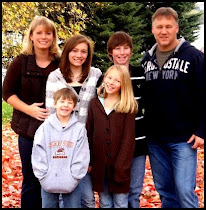 The following excerpt is from http://whychristmas.com/customs/trees.shtml. Check out this site for more articles on Christmas customs and how other countries celebrate Christmas.
The following excerpt is from http://whychristmas.com/customs/trees.shtml. Check out this site for more articles on Christmas customs and how other countries celebrate Christmas.Christmas Trees
The evergreen fir tree has been used to celebrate winter festivals (pagan and Christian) for thousands of years. Pagans used branches of it to decorate their homes during the winter solstice, as it made them think of the spring to come. The Romans used Fir Trees to decorate their temples at the festival of Saturnalia. Christians use it as a sign of everlasting life with God.
Nobody is really sure when Fir trees were first used as Christmas trees. It probably started about began 1000 years ago in Northern Europe.
The first documented use of a evergreen tree at Christmas and New Year celebrations is in town square of Riga, the capital of Latvia, in the year 1510. In the square there is a plaque which is engraved with "The First New Years Tree in Riga in 1510", in eight languages. Not much is known about the tree, apart from that it was attended by men wearing black hats, and that after a ceremony they burnt the tree. This is like the custom of the Yule Log. You can find out more about the Riga Tree from this great website: www.firstchristmastree.com
The first first person to bring a Christmas Tree into a house may have been the 16th century German preacher Martin Luther. A story is told that, one night before Christmas, he was walking through the forest and looked up to see the stars shining through the tree branches. It was so beautiful, that he went home and told his children that it reminded him of Jesus, who left the stars of heaven to come to earth at Christmas. Some people say this is the same thee as the 'Riga' tree, but it isn't! The Riga tree originally took place a few decades earlier. Northern Germany and Latvia are neighbours.
Another story says that St. Boniface of Crediton (a place in Devon, UK) left England and travelled to Germany to preach to the pagan German tribes and convert them to Christianity. He is said to have come across a group of pagans about to sacrifice a young boy while worshipping an oak tree. In anger, and to stop the sacrifice, St. Boniface is said to have cut down the oak tree and, to his amazement, a young fir tree sprang up from the roots of the oak tree. St. Boniface took this as a sign of the Christian faith and his followers decorated the tree with candles so that St. Boniface could preach to the pagans at night.
There is another legend, from Germany, about how the Christmas Tree came into being, it goes:
Once on a cold Christmas Eve night, a forester and his family were in their cottage gathered round the fire to keep warm. Suddenly there was a knock on the door. When the forester opened the door, he found a poor little boy standing on the door step, lost and alone. The forester welcomed him into his house and the family fed and washed him and put him to bed in the youngest sons own bed (he had to share with his brother that night!). The next morning, Christmas Morning, the family were woken up by a choir of angels, and the poor little boy had turned into Jesus, the Christ Child. The Christ child went into the front garden of the cottage and broke a branch off a Fir tree and gave it to the family as a present to say thank you for looking after him. So ever since them, people have remembered that night by bringing a Christmas Tree into their homes!
Christmas Trees, as we know them, may have started as the Paradise Trees that represented the Garden of Eden in the German Mystery Plays that took place during the Middle Ages. These plays told Bible stories to people who could not read.
In Germany, the first Christmas Trees were decorated with edible things, such as gingerbread and gold covered apples. Then glass makers made special small ornaments similar to some of the decorations used today. At first, a figure of the Baby Jesus was put on the top of the tree. Over time it changed to an angel/fairy that told the shepherds about Jesus, or a star like the Wisemen saw.
The first Christmas Trees came to Britain sometime in the 1830s. They became very popular in 1841, when Prince Albert (Queen Victoria's German husband) had a Christmas Tree set up in Windsor Castle. Ever since then, Christmas Trees have been a part of a British Christmas.
In Victorian times, the tree would have been decorated with candles to represent stars. Because of the danger of fire, in 1895 Ralph Morris, an American telephonist, invented the first electric Christmas lights, similar to the ones we use today.
Many towns and villages have their own Christmas Trees. One of the most famous is the tree in Trafalgar Square in London, England, which is given to the U.K. by Norway every year as a 'thank you' present for the help the UK gave Norway in World War II. The White House in the U.S.A. has had a big tree on the front lawn since the 1920s.
In many countries, different trees are used as Christmas trees. In New Zealand a tree called the 'Pohutakawa' that has red flowers is used and in India, Banana or Mango trees are sometimes decorated.















No comments:
Post a Comment